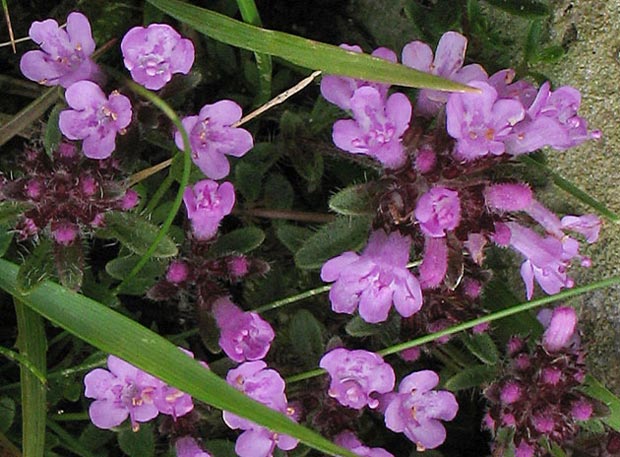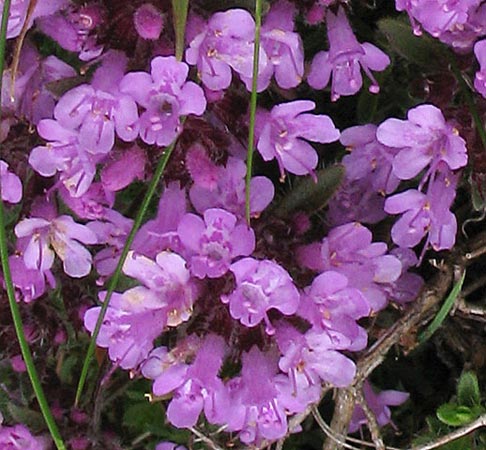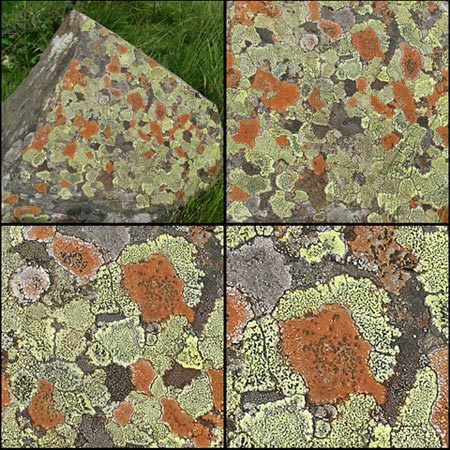or, on the right side of it to go to the next page.

33 As ever there is also
plenty to see about you feet on these hill as well as sheep poo. The flower
that you see in the picture above and the first two pictures below is
I think a type of Speedwell.
In the fourth picture I have combined 4 shots together. The top left shot
shows a boulder with lichen on it and the other three shots progressively
zoom into that picture to bring out more detail of the lichen.
When writing this I thought I would check on "lichens" on the
web and I came up with a site with wonderful
pictures which made me realise that I don't really know the difference
between "lichens" and "mosses" to the extent that
though I would always have called what is on this stone lichen I suddenly
wasn't so sure. Then I checked on sites that try to explain the difference
and these got a bit heavy with loads of technical stuff for the layman
like me. However here is a site that looks at lichens,
algae and mosses on gravestones (which ties in well with the Dead
for Cauld theme of our walk!) that makes me think this is indeed lichen
though not of the foliose or fructicose varieties as they describe them
-
A lichen is a composite organism, partly made up of a fungus and partly
composed of algae. Lichens are capable of colonising a variety of materials,
including trees and stone surfaces. Lichens can be divided into four broad
groups of species, dependent on their growth forms:
1) leprose lichens, 2) crustose lichens, 3) foliose lichens, 4) and fructicose
lichens.


